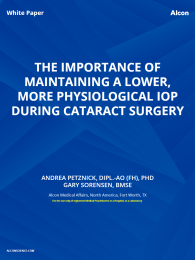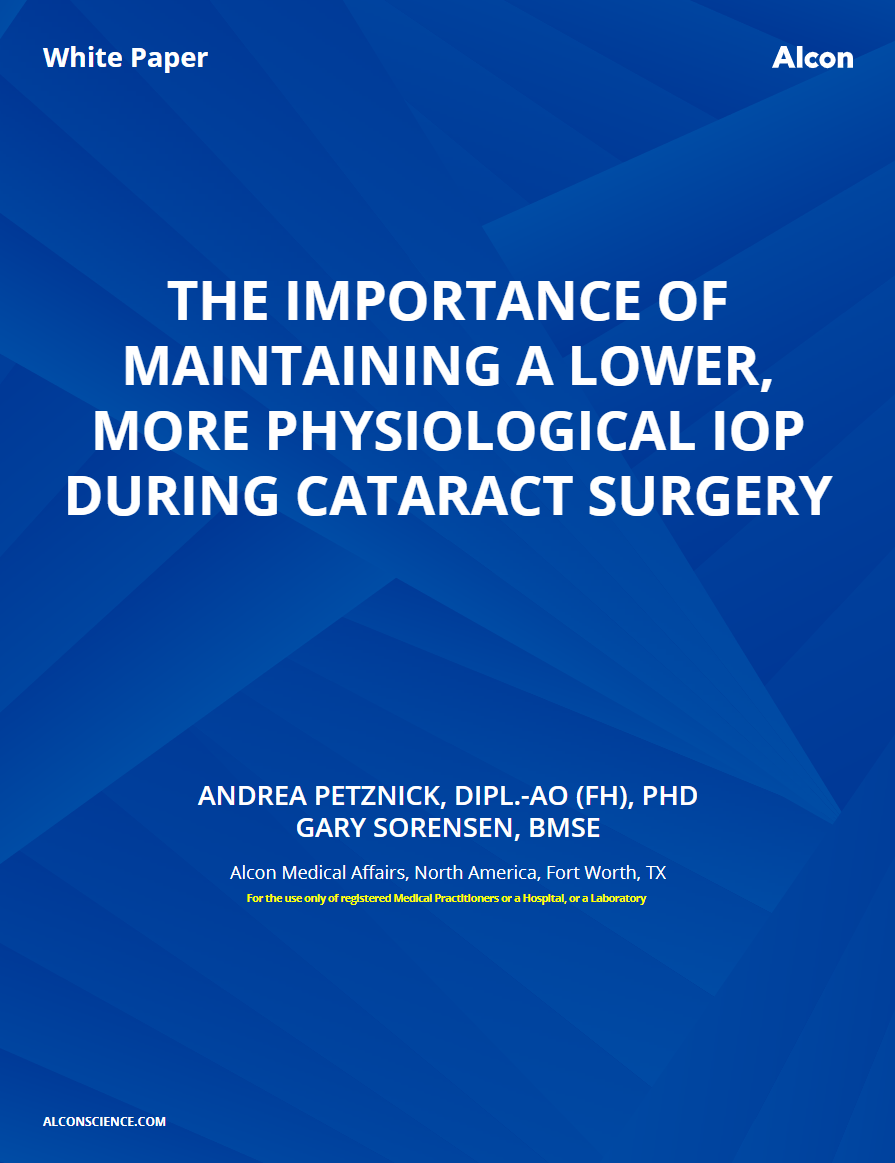This website is intended for HCP use alone and Alcon shall not be liable for any actions arising from unadvised and unsupervised use of the material provided here. Please refer to relevant products Directions for Use or Operator’s manuals for complete list of indications, contraindications and warnings.


KEY TAKE-AWAYS
- Cataract surgery performed with high irrigation pressures result in intraoperative IOPs that are typically many times higher than the physiological IOP.
- High levels of irrigation pressure have historically been necessary because of technology limitations with phacoemulsification systems. These high pressures were required to maintain adequate chamber stability at efficient parameters of aspiration flow and vacuum.
- Higher levels of IOP during cataract surgery may have undesirable clinical ramifications, such as greater post-operative anterior segment inflammation, more corneal edema and disruption of the anterior vitreous face.
- Higher IOP settings during phacoemulsification reduce the retinal blood flow, cause subclinical changes in the retina and may pose a risk of causing transient ocular ischemia.
- Patients with higher pre-operative IOP, larger anterior chamber depth and axial length may experience greater levels of discomfort with a higher irrigation pressures during cataract surgery.
- Newer technologies available with Centurion® ACTIVE SENTRY® Vision System now enable a very stable anterior chamber at more efficient vacuum levels and a lower, more physiological IOP.

